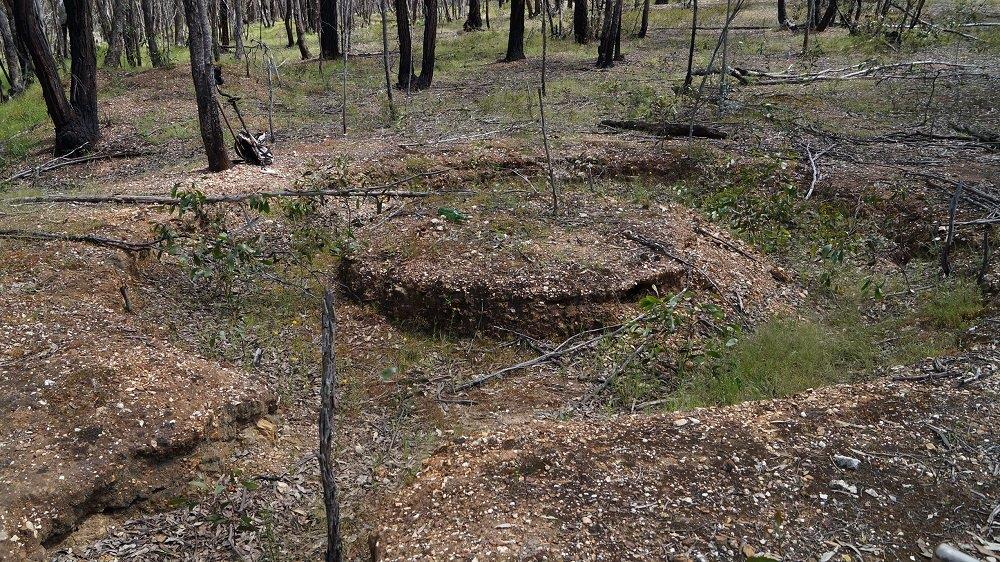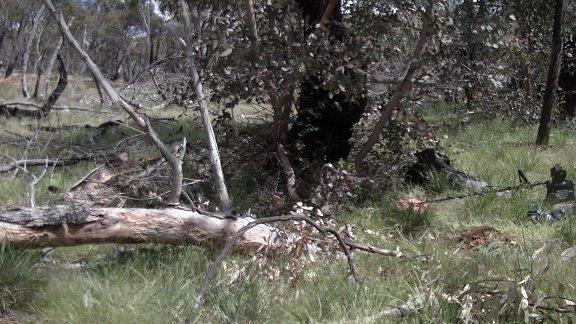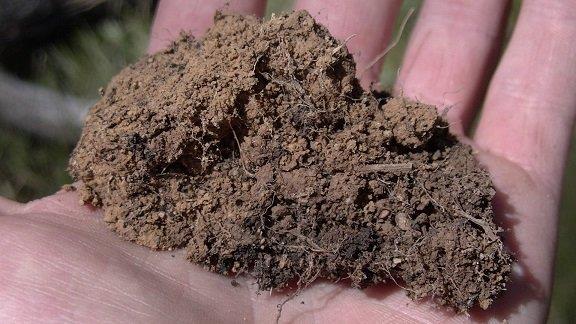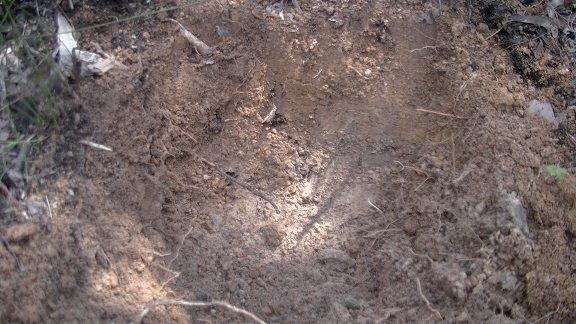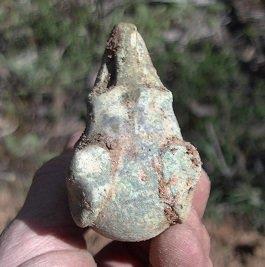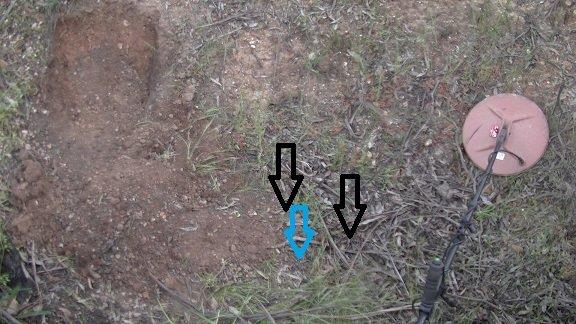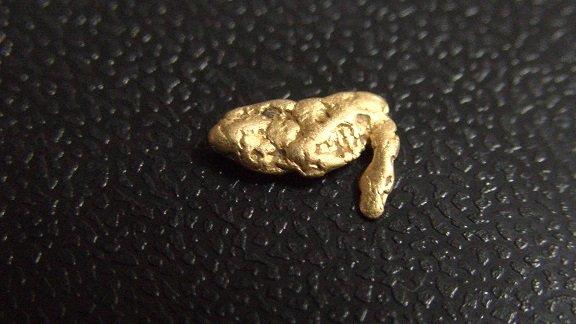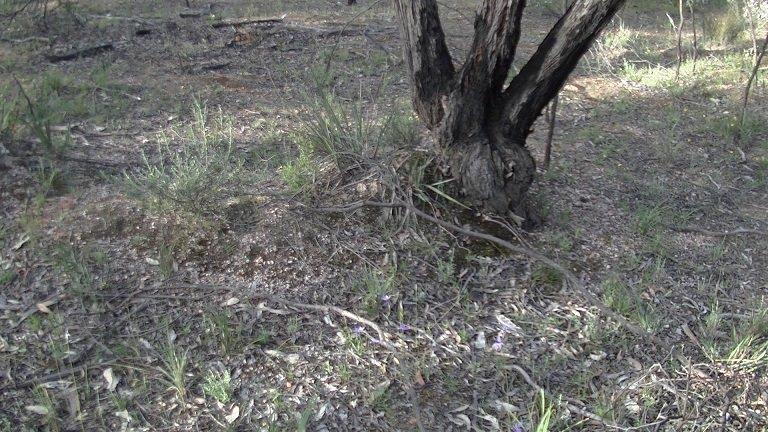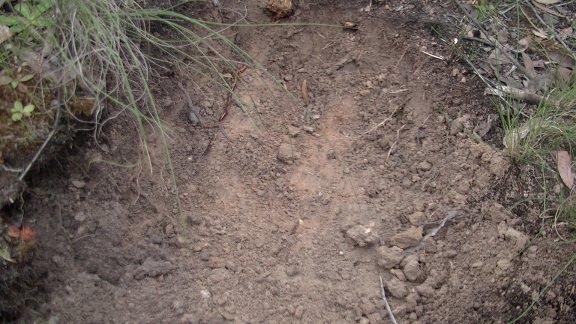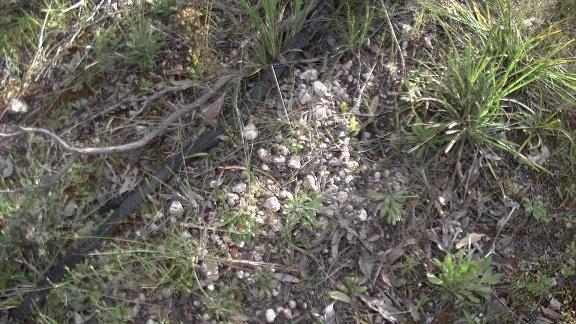Hi All,
Back out in the field today had some pretty amazing targets - digging away 1 foot 2 foot 3 foot holes, the grounds are excellent and soft slightly moist from our wet season. Makes digging a whole lot quicker
3 foot holes some rusty stakes - and other rusty looking objects - seem to find a lot of pieces of round steel 30mm, 50mm to 100mm in length and mostly 8mm to 10mm diameter solid round bar. Still gets me what these were used for, not sharp on either end just a piece of solid rod
When I arrived at this location - I walked down along the side of a very shallow gully and noticed a section of test holes going off the main gully - I looked at this section with a slight undulation just off to the side and fired up the detector.
1. This was the section which I noticed - see how flat no workings and slightly goes uphill - directly behind me in this photo is the main shallow gully - maybe 600mm to 1mtr of depth where the old miners hit the wash dirt.
2. This is directly to the left of the flat section with no workings - pretty much just on the edge of the line of test holes/workings - maybe 1mtr from the base of the tree in these photo's you can see the target hole that I started to dig.
3. The grounds were covered with clay and only inches below this clay was some gravels
4. The piece was in this clump - you can see this is the top part of the hole - the soils and plant matter etc - so this target was only 2 inches below - this was the first target unearthed today. Always a good start
5. Just some of the things we have to battle with in the fields - I usually detect in front or beside then simply take a few minutes to move the branches to where I have just thoroughly detected
6. Beautiful sound here - I like to hear the nice smooth even sounds that dont scream too much - I dig everything but hearing certain tones increases the excitement level a little more. Scraped the top, I hit some red clays then the stuff we all love to hear on our pick rocks, and then we see- wash material sands, quartz, ironstone
And there we are a beautiful rust nugget
7. After digging a few more targets along the way some rust, lead, old split pin - I came across a screamer but near a tree - in between 4 test holes - the target was roughly 1 foot down
I couldnt believe it when I pulled it out of the ground just like Ric Savage would say BOOM BABY - this would be at the top of my list for best relic finds - the level of excitement was more than finding the piece of gold earlier - relics in great condition are so rewarding because we try to think who must have owned it, especially if we can distinguish the object. The person walking the gold fields with this pimped out walking stick. Green tarnish would indicate it is brass and being very heavy it must be solid brass head.
8. Another nice target here - see the marking on the ground - this was a tree branch - the target was maybe 1 foot down - musket ball - thats why it pays to move anything in your way.
9. A friendly only 10 mtrs away
10. After digging a few more targets - I came across a pile of dirt which looked to be conglomerate broken up and classified - you could see it was one big pile and one side smaller rock pieces and this side where the target was - the pieces were larger. When I found this target and scraped the top - then dug maybe 100mm down the target was out. You can see the arrows here there were actually 3 targets - When I pinpointed 2 targets I wasnt convinced that this is what came out of the pile - the issue that I had here was when I first located the target on the top of the pile I moved the dirt to one side with my foot. The problem was I didnt check the ground before I done this
When I removed the 2 black targets - I had trouble finding the third target because it must have went to the bottom of the loose stuff - I simply kicked dirt back into where I previously scraped and worked through it again. I wasnt convinced that the 2 previous targets were the one from the hole - I guess some people may just walk away after filling their hole and think the 2 targets were it - after an extensive search I heard the faint sound again and located it.
Found it after a few minutes - a piece of Gold in broken up Conglomerate - almost the last target for the day.
After cleaning
Today was one of those days - first target Gold - many deep holes and targets in between but pushed through digging all - an excellent condition relic and almost the last target for the day Gold.
The last target was closer to power lines and getting EMI interference, you just work between the interference to distinguish the solid - simply tuning it out when I was nearing and not using cancel to ensure maximum depth, you can tune them very well and get reasonably close without too much interference - I tune walk some then tune again and it keeps it to a minimal and surprisingly close to the power lines. I like these area's only because some people just cant stand the noise, some also dont know how to tune out, and also many detector brands that cant cope with EMI. This adds to our probability
All the best and thanks to all for your support on the thread - good luck, happy prospecting, as always be safe and well and talk soon.















